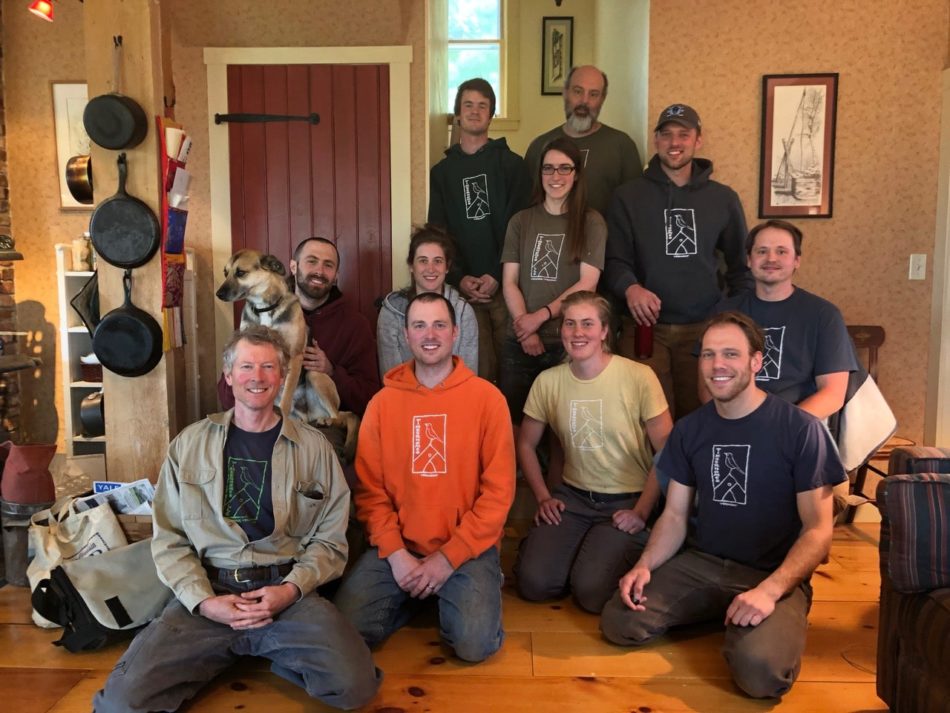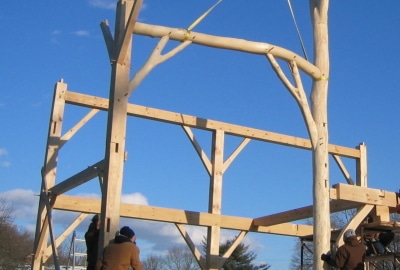TimberHomes recently had another company wide meeting. Though not a large enterprise, making time to get all employees together from the company’s two facilities at least once a quarter is a stated priority. While both shops largely work independently, there is, at times, quite a lot of overlap in terms of project development, design, and the sharing of tools and labor. Though separated by nearly 50 winding Vermont miles, TimberHomes benefits when the two shops collaborate.
TimberHomes is a worker owned business. In fact, the number of member-owners recently expanded to six from an original three. Within a couple of years, this number is likely to grow still to nine, possibly further complicating decision making and administration. It’s not likely that biweekly partner meetings, where all are present, will continue to be an efficient way to manage the company’s affairs. This latest meeting was designed to assess how TimberHomes currently functions and to brainstorm how to lay the ground work for creating effective, though democratic, function. As a geography teacher once explained, “How will you know where you are going, if you don’t know where you are?”
 One of the meeting’s central purposes was to give the opportunity to all employees, owner and non, to reflect on the company’s strengths and weaknesses. Having especially non-owner employees share their experiences, both positive and negative, was extremely insightful. Comments like: “who was my boss in this particular situation?”, or “I didn’t know who to talk to when I needed something?” offered concrete examples of times when things could have been better. Conversely, it was reassuring for the owners to hear from a few non-owners, “I felt listened to”.
One of the meeting’s central purposes was to give the opportunity to all employees, owner and non, to reflect on the company’s strengths and weaknesses. Having especially non-owner employees share their experiences, both positive and negative, was extremely insightful. Comments like: “who was my boss in this particular situation?”, or “I didn’t know who to talk to when I needed something?” offered concrete examples of times when things could have been better. Conversely, it was reassuring for the owners to hear from a few non-owners, “I felt listened to”.
While the meeting did not result in a new system of company meetings, it did point towards the need for better defined roles within the company structure, and with that, defined responsibilities and budgets to work with within specific spheres. The reality of having two shops with separate personnel and needs indicates that a certain amount of decentralized decision making (and spending) is appropriate. Though because the two shops and their people do collaborate and are under a single company umbrella, a coherent, unified structure is also necessary.
The meeting took an interesting turn when the topic of company wide standards came up. While TimberHomes is known for a specific look both in terms of construction style and materials used, the variety of projects and the number of designers and project managers have all grown considerably as of late. Who has the final say about stylistic questions or how work is done? While there was some disagreement, all were of a like mind that policy does need to be developed for the sake of clarity in operations.
 The meeting left all feeling hopeful about the future and for TimberHomes’ chances at “self-actualization”. The recent uptick in both the number of employees and owners has led to some understandable growing pains. Efficient management of an employee owned business is clearly not a simple task when one considers the goal of providing a democratic and open decision making process. While TimberHomes doesn’t yet have all the answers, it’s clear that TimberHomes wants to build something beautiful.
The meeting left all feeling hopeful about the future and for TimberHomes’ chances at “self-actualization”. The recent uptick in both the number of employees and owners has led to some understandable growing pains. Efficient management of an employee owned business is clearly not a simple task when one considers the goal of providing a democratic and open decision making process. While TimberHomes doesn’t yet have all the answers, it’s clear that TimberHomes wants to build something beautiful.

